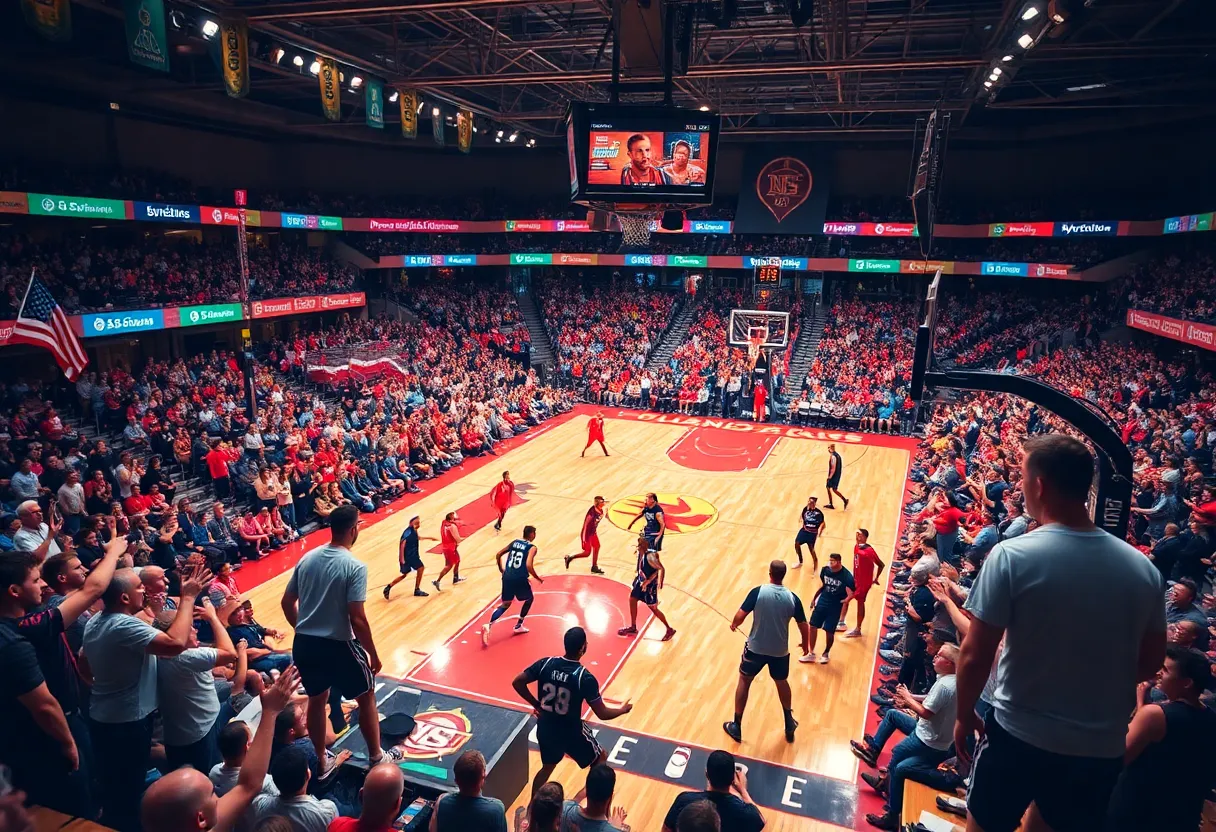Omaha, October 17, 2025
The University of Nebraska at Omaha is experiencing a budget imbalance, spending more on administrative roles than on faculty, which raises concerns for its athletics programs. As administrative spending has surged by 25% over five years, athletics budgets remain constrained. Athletic Director Sean Shields highlights the urgent need to prioritize resources for sports teams, while faculty unions demand reforms to support both academics and athletics. Despite recent successes, stakeholders worry about the future of UNO athletics amidst this financial strain.
University of Nebraska Faces Budget Imbalance in Athletics Funding
Omaha, NE – The University of Nebraska at Omaha (UNO) now spends more on administrators and managers than on faculty, creating significant concerns for its athletics programs. This financial shift, identified through a recent analysis conducted at the Omaha campus, shows that administrative spending has surged by 25% over the past five years, growing faster than faculty salaries. The imbalance directly affects athletics, where budgets for coaching staff remain constrained despite increasing operational costs.
Athletic Director Sean Shields has voiced concerns over the situation, emphasizing the need to prioritize resources for on-field activities to keep UNO competitive. The trend stems from the expansion of administrative roles focused on compliance and fundraising, particularly in response to the rise of Name, Image, and Likeness (NIL) deals for student-athletes. These developments have diverted funds away from core academic support, which in turn impacts the broader ecosystem supporting sports teams.
Faculty unions have called for immediate reforms, cautioning that further disparities could lead to cuts in academic programs essential for athletes. Such reductions might undermine the university’s ability to maintain its recent athletic successes, including football bowl game appearances. University President Ted Carter has committed to a thorough review of the budget, with a focus on achieving more balanced investments across departments.
Impact on UNO Athletics
The athletics department at UNO is feeling the pressure most acutely. Coaching budgets have not kept pace with rising expenses for facilities, travel, and training, limiting the program’s ability to recruit and retain top talent. For instance, the men’s basketball team is preparing for upcoming conference play, but limited funding could hinder their performance against stronger Big Ten rivals who are investing heavily in their sports programs.
This situation is not isolated to athletics but reflects a broader reallocations at the university. Over the five-year period, administrative positions have proliferated to handle new regulatory demands and revenue-generating efforts. However, this growth has come at the expense of faculty compensation and program funding, creating a ripple effect throughout campus life.
Broader Financial Context
UNO’s budget challenges highlight a nationwide trend in higher education where administrative overhead is expanding rapidly. At UNO specifically, the 25% increase in administrative spending has tipped the scales, making it exceed faculty allocations for the first time. This shift occurs as the university navigates the evolving landscape of college sports, including NIL opportunities that require additional oversight and support services.
Despite these hurdles, UNO’s athletic programs have shown resilience. Recent achievements, such as consistent football bowl participations, demonstrate the potential when resources are adequately directed. The men’s basketball team, in particular, has maintained a competitive edge in recent seasons, but stakeholders worry that without equitable support, future successes could be jeopardized.
Steps Toward Resolution
The university’s leadership is taking proactive measures. The pledged review aims to reassess priorities and identify efficiencies in administrative spending. Potential outcomes include reallocating funds to faculty and athletics, streamlining compliance operations, and enhancing fundraising strategies to offset costs. Faculty unions are actively engaging in discussions, pushing for transparency and structural changes to prevent deeper cuts.
As Big Ten competition intensifies, UNO athletes and coaches are gearing up for the challenges ahead. The hope is that the budget review will lead to more sustainable funding models, ensuring that on-field resources remain robust. This matter affects not only immediate performance but also the long-term viability of UNO’s athletic department within a shifting higher education finance environment.
In summary, the financial imbalance at the University of Nebraska at Omaha underscores the need for careful resource management. With administrative spending outpacing other areas by 25% over five years, athletics stands at a crossroads. The ongoing review offers a pathway to balance, potentially safeguarding the university’s competitive standing in college sports.
FAQ
What is the main financial issue at the University of Nebraska at Omaha?
The University of Nebraska at Omaha now spends more on administrators and managers than on faculty, with administrative spending surging by 25% over the past five years.
How does this budget shift affect athletics at UNO?
At UNO, this trend impacts athletics, where coaching staff budgets remain tight despite rising operational costs, limiting resources for on-field activities.
What has the athletic director said about the situation?
Athletic Director Sean Shields expressed worry over the need to prioritize on-field resources to stay competitive amid the budget constraints.
What caused the increase in administrative spending?
The report attributes the imbalance to expanded administrative roles in compliance and fundraising amid NIL deals for athletes.
What are faculty unions doing in response?
Faculty unions demand reforms, warning of potential cuts to academic programs that support sports teams.
How has UNO athletics performed recently?
Nebraska’s athletic success, including recent football bowl appearances, could suffer if funding skews further.
What action has the university president taken?
University President Ted Carter pledged a review, promising balanced investments.
How does this compare to Big Ten rivals?
As Big Ten rivals invest heavily, UNO athletes like the men’s basketball team gear up for conference play, hoping for equitable support to maintain their edge.
Budget Allocation Trends at UNO
| Category | Five-Year Change | Impact on Athletics |
|---|---|---|
| Administrative Spending | 25% Surge | Exceeds faculty funding, tightens coaching budgets |
| Faculty Salaries | Outpaced by Admin | Risks cuts to support programs for sports teams |
| Athletics Operational Costs | Rising | Constrained resources despite needs for competitiveness |
Deeper Dive: News & Info About This Topic
HERE Resources
UNO Launches ‘Under the Lights With UNO’ for Night Games
Omaha High Schools Excel in State Softball Tournament
University of Nebraska at Omaha Hosts Banana Ball Event





